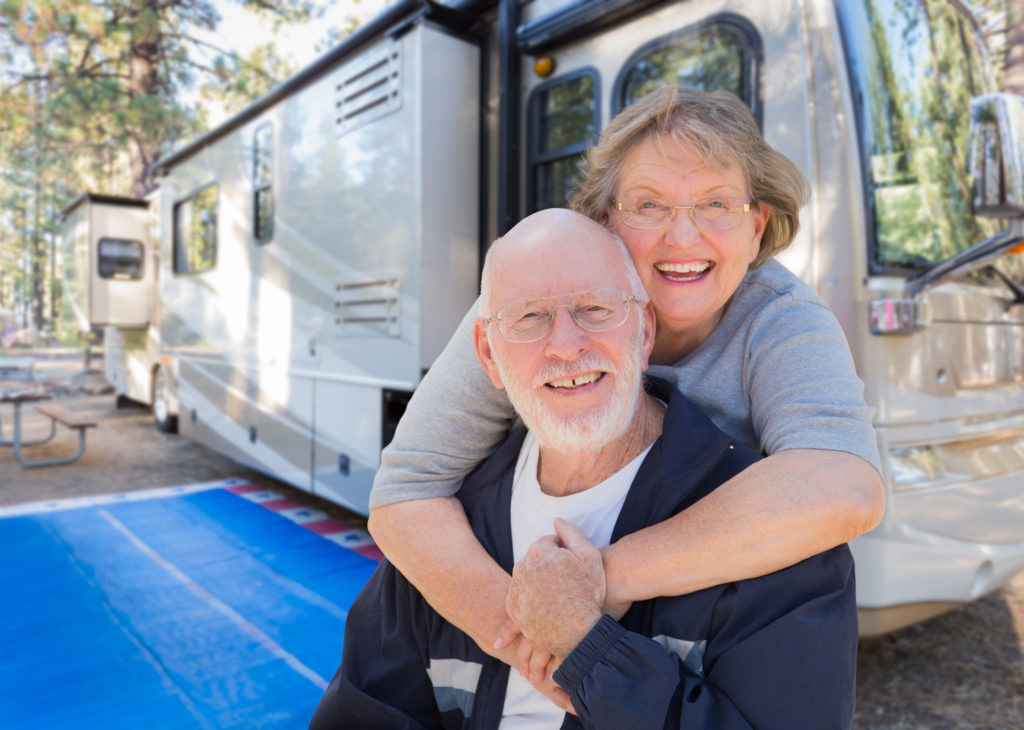
There are millions of RVers in the US, some going cross-country or just across the state line, many for the first time. Safety tips for RV travel can come in handy even if you’re a veteran—read on below for some of our favorites.
Start with a safety check of your RV, then do it again every few hours.
Making time for a safety check before you hit the road is essential, but it’s also a good idea to stop every few hours to stretch your legs and walk around your rig to make sure tires, brakes, hitches and everything else that might cause an accident is secure. Should you need a list, there are tons online to download.
Once you’re familiar with your rig, you can put together your own list.
Not all things on all lists will apply to you, but once you’ve been on the road a few times, you’ll know what you need to look for. Some veterans recommend making two—one for inside and one for outside.
Don’t forget to check under the hood, too.
When you stop in to fuel up take a minute to check under your hood and make sure all the fluid levels are up where they should be, and nothing is leaking. It’s better to find out you have a problem at a well-lit station with a mechanic on hand than on a long stretch of lonely road!
Keep an eye on that propane tank.
This one’s a big job, and there are several ways you can ensure a safe ride. Don’t paint the tank in dark colors (white deflects heat, dark colors absorb it); don’t travel with any burners or stoves lit; don’t refuel your tank with your engine running; double check older or less used tanks for blockages; have lines and tanks regularly checked by a professional; and install a propane gas detector.
Know thine RV’s brakes.
RV brakes are air rather than hydraulic like car brakes, so the feel is different. Practice braking before you take to the open road, so you don’t end up hitting them too hard.
Know thine RV’s height and width and length.
A rig is a very different animal to drive—and not all bridges were made for RVs to pass under. For that matter, narrow roads can be a problem, especially when you consider a typical RV is 8.5-feet wide and highway lanes average about 10-feet in width. Anything tighter than that and you’ll have to do some careful maneuvering. To help you remember your clearance, put a sticky note on your dashboard with the number, and you’ll be good to go. As for length and parking, an assistant to help you pull in or out always comes in handy.
Know thine RV’s weight.
If your rig is fully loaded, you’ll notice it’s slower to accelerate and stop. The rule of 20 percent is a good guideline: Always add 20 percent whether you’re extending your following distance or merging into traffic.
Avoid blowouts.
Blowouts are sometimes inevitable, but you can do a lot to avoid a failure. Watch the pressure (both underinflation and overinflation can lead to blowouts); keep tires covered when not in use to prevent UV and ozone damage; avoid tire products that contain petroleum-based substances that can accelerate cracking; bloc and level your RV each time you plan on staying somewhere more than a day or two; and replace them every 7 years or so.
Take us with you!
In the event of an unexpected illness or accident, SkyMed is your best ally! We not only take you home, but you’re membership also includes driving your rig back as well. Find out more at www.skymed.com or contact your local rep!







